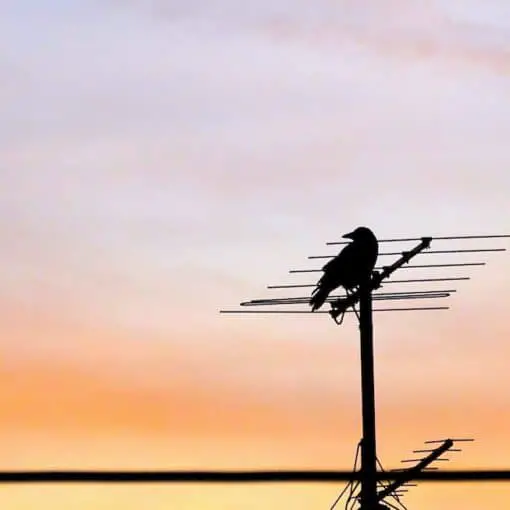Ham radio, or amateur radio, is a fascinating hobby for many individuals who enjoy communicating and experimenting with radio frequencies. Advanced operators often seek to expand their knowledge, improve their skills, and stay updated on the latest technology and techniques in the field. One of the best ways to accomplish these goals is by delving into specialized books written by experts and experienced operators.
For advanced ham radio operators, certain books can be incredibly valuable, covering topics such as antenna design, radio propagation, digital modes, and station setup. These books not only provide deep insights into the technical aspects of ham radio operations, but also offer practical advice and useful tips for achieving peak performance in the hobby. By investing time in studying these resources, advanced operators not only hone their existing knowledge, but also stay at the forefront of this ever-evolving field.
Some of the best ham radio books for advanced operators include ARRL Handbook, Experimental Methods in RF Design, and ON4UN’s Low-Band DXing. These books provide in-depth information to help operators expand their expertise and tackle various challenges that they may encounter in the world of amateur radio. By embracing the importance of continued learning, advanced operators can maximize their enjoyment and success in the ham radio community.
Radio Theory and Electronics
Radio theory and electronics play a significant role in advancing the field of amateur radio, also known as ham radio. This section covers key aspects such as signal processing techniques and RF design principles, providing a solid foundation for any advanced operator.
Signal Processing Techniques
Signal processing is an essential part of radio communication systems. It involves manipulating and analyzing signals to improve performance and functionality in transmitter and receiver systems. Some fundamental signal processing techniques include:
-
Modulation: Converting information from a low-frequency signal to a higher frequency carrier signal to enable efficient transmission.
-
Demodulation: Extracting the original information signal from the modulated carrier signal at the receiver end.
-
Filtering: Removing unwanted frequency components from a signal using filters such as low-pass, high-pass, band-pass, or band-stop filters.
-
Amplification: Increasing the signal strength to improve the overall system performance.
-
Mixing: Combining two or more signals to create a new frequency component, which is crucial in converting signals between different frequency bands.
A deeper understanding of these techniques is essential for advancing the pursuit of wireless technology, as discussed in the ARRL Handbook For Radio Communications.
RF Design Principles
RF design principles focus on the development and optimization of radio frequency components such as transmitters, receivers, and antennas. Advanced operators need to understand these principles to experiment with radio electronics and achieve efficient communication systems. Key concepts in RF design include:
-
Impedance Matching: Ensuring that components have the same impedance to minimize signal reflection and maximize power transfer.
-
Noise Reduction: Systematically identifying and reducing sources of noise within the radio environment to achieve a cleaner signal.
-
Circuit Design: Creating high-performing circuits using components such as resistors, capacitors, inductors, and semiconductors, with an emphasis on minimizing losses and improving efficiency.
-
Antenna Theory: Designing and optimizing antennas for transmitting and receiving radio signals at desired frequency bands.
-
Radiation Patterns: Evaluating the directional properties of antennas to determine their performance in real-world radio scenarios.
One resource for mastering these principles is the book Experimental Methods in RF Design.
Ham Radio Mastery: The All-In-One Guide to Acing Your Technician Class Exam & Unlocking the World of Amateur Communication
With the guidance and support of this book, you can master the intricacies of ham radio and join the ranks of over one million ham radio operators worldwide
ARRL Resources and Books
The American Radio Relay League (ARRL) is a renowned organization in the world of amateur radio, offering a wide range of resources and books aimed at enhancing the knowledge and skills of radio enthusiasts. For advanced operators, some notable publications from the ARRL include the ARRL Ham Radio License Manual, The ARRL Operating Manual, and the ARRL Handbook for Radio Communications.
The ARRL Ham Radio License Manual serves as a comprehensive guide for amateur radio operators. The book covers all the information required to pass the licensing exam and includes detailed explanations of radio concepts, regulations, and operating techniques. This manual is useful not just for beginners but also advanced operators as a reference tool or a refresher.
The ARRL Operating Manual is another valuable publication, designed to help you make the most of your equipment and improve your operating skills. This book covers various topics such as voice and digital modes, contesting, and DXing, making it an essential resource for those looking to develop their expertise in amateur radio.
For a more comprehensive technical resource, the ARRL Handbook for Radio Communications stands out as a must-have for every advanced radio amateur’s bookshelf. This handbook provides in-depth information on electronics theory, radio design, and practical applications aimed at advancing your understanding of amateur radio technology.
Additionally, the ARRL Operating Manual and the ARRL Antenna Book are two other notable publications worth exploring. The operating manual offers practical tips and advice for advanced operators, while the antenna book provides detailed guidance on antenna design and construction.
In summary, the ARRL offers a wide range of resources and books catering to the needs of advanced amateur radio operators. These publications provide valuable insights and guidance to further enhance your knowledge and improve your operating skills in the world of ham radio.
Ham Radio Licensing and Exams
Ham radio operation requires a license, and there are three license classes available to aspiring operators in the United States: Technician, General, and Extra. Each license class is subject to different regulations and allows access to specific amateur radio frequencies. To obtain a license, individuals must pass the corresponding exams, which test their knowledge of radio operation, electronics, safety, and related operating rules.
Question Pools and Study Guides
The ARRL Ham Radio License Manual is a popular study guide for those preparing for their ham radio license exams. This manual is updated regularly to include the latest question pool and is designed for self-study or classroom use. Online resources like the ARRL Ham Radio License Manual Online Glossary can provide additional information as you study.
When seeking an online review resource, the Ham Radio Prep website offers a comprehensive study guide covering all ham radio license levels. Furthermore, the site Exam Shazam features a list of the best ham radio study guides, which can help you prepare for your exam.
License Class Updates
The Technician, General, and Extra Class license exams are updated periodically to reflect the latest regulations and technological advancements in ham radio operation. Current question pools used in exams are valid for around four years, with the Technician Class license pool being valid from July 1, 2018, to June 30, 2022. The other two license classes have their specific validity periods as well.
Exam updates can affect the content in both the ARRL Ham Radio License Manual and other study guides, so it is essential to use the latest edition of these materials when preparing for your exam. Staying informed about changes in ham radio licensing and exams is crucial to ensure you have the most accurate and up-to-date information for your studies.
Operating Modes and Activities
In this section, we will discuss various operating modes and activities that advanced ham radio operators can explore to enhance their communication skills.
DXing and Contesting
DXing refers to the pursuit of making long-distance contacts with other radio operators around the world. This activity relies on optimizing antennas, choosing radio frequencies, and leveraging atmospheric conditions for effective communication. Radiosport, also known as contesting, involves competing with fellow ham radio operators in timed challenges, such as making the most contacts within a given period. Both DXing and contesting contribute to the thrill of amateur radio and allow operators to hone their skills.
Satellites and Repeaters
Operating through amateur satellites and repeaters provides an opportunity to expand communication capabilities, especially in the VHF/UHF frequency range. Repeaters are automated relay stations that receive signals from one frequency and retransmit them on another, enabling radio communication between users beyond their line of sight. Some repeaters, known as cross-band repeaters, can connect users on different bands to promote efficient communication.
Morse Code and Digital Modes
Morse Code (CW) is a timeless and widely used mode among ham radio operators. Learning and utilizing Morse Code can be advantageous in situations where other forms of communication fail, such as during emergency communication efforts. Additionally, many digital modes, like RTTY and PSK31, offer various ways of transmitting text and data via radio signals, increasingly important in this digital age.
Portable and Mobile Operations
Portable and mobile operations enable ham radio operators to take their hobby on the go and be ready to assist in emergency communication situations. Mobile operation involves setting up equipment in a vehicle, while portable operation typically includes setting up temporary stations in various locations, such as parks or remote areas. Both forms of operation provide valuable opportunities for operators to practice their skills, make contacts, and explore different functions of their radios.
Exploring these advanced activities not only helps experienced ham radio operators enhance their communication skills but also fosters a deeper understanding and appreciation for this diverse and engaging hobby.
Antennas and Station Setup
Antenna Design and Selection
When setting up a ham radio station, choosing the right antenna is crucial for optimal performance. Antenna design plays a significant role in determining the efficiency and effectiveness of your station. Several factors influence antenna selection, such as frequency, transmission mode, and location. One highly recommended resource for antenna design and selection is “The ARRL Antenna Book for Radio Communications”.
When selecting an antenna, consider the following factors:
- Frequency range: Choose an antenna that supports the frequencies you plan on operating.
- Directionality: Some antennas are omnidirectional, while others are more directional, providing better gain in a specific direction.
- Polarization: Depending on the mode of transmission, antennas can be vertically, horizontally, or circularly polarized.
- Size and space: Make sure the antenna is suitable for the available space and can be installed safely.
Station Grounding and Bonding
Proper grounding and bonding are essential for the safe and efficient operation of your ham radio station. “Grounding and Bonding for the Radio Amateur” is an excellent book that provides practical advice on station grounding and bonding. Key factors to consider include:
- Ground system design: A well-designed ground system minimizes noise, provides a proper reference for equipment, and ensures safety.
- Material selection: Use high-quality materials such as copper strap, ground rods, and clamps to ensure good conductivity and corrosion resistance.
- Maintenance: Periodic inspection and maintenance of your grounding system are crucial to maintaining performance.
Lightning Protection
Protecting your ham radio station from lightning strikes is vital for the safety of your equipment and yourself. Lightning protection consists of various components and techniques:
- Grounding: As mentioned earlier, proper grounding is essential. A low-resistance ground is critical for lightning protection.
- Surge protectors: Install surge protectors on all cables entering your ham radio station, including power cables, antennas, and data lines.
- Antenna disconnect: Consider disconnecting antennas when your station is not in use or during severe weather conditions.
Remember, no system can offer complete protection against lightning. Nonetheless, following these guidelines and practicing good safety measures can reduce the risk of damage to your ham radio station.
Troubleshooting and Technical Skills
As an advanced ham radio operator, it’s essential to have a strong foundation in troubleshooting and technical skills. The ARRL Operating Manual is an excellent resource for honing these abilities. In this section, we’ll discuss two critical areas: receiver sensitivity and selectivity, and noise reduction techniques.
Receiver Sensitivity and Selectivity
One of the key aspects of maintaining efficient radio communication is understanding the importance of receiver sensitivity and selectivity. Receiver sensitivity refers to the ability to detect weak signals, while selectivity denotes the capacity to distinguish between adjacent or close-range frequencies.
Experimental Methods in RF Design, another useful ham radio book, covers the topic of receiver design in great detail, exploring the factors that impact sensitivity and selectivity. By learning and applying these concepts, you can:
- Improve your ability to pick up weaker signals from distant contacts
- Reduce interference from nearby signals competing for airtime
Noise Reduction Techniques
Effective noise reduction techniques are vital in enhancing your ham radio experience by ensuring clear and coherent communication. Several methods can help minimize noise, including:
- Filtering: Adjusting the frequency response of your radio to allow only desired signals through
- Digital Signal Processing (DSP): Utilizing digital technology to identify and reduce noise while preserving the intended audio
- Beamforming: Using directional antennas to focus more on the desired signal’s direction and less on other unwanted signals
Both the ARRL Operating Manual and Radio Electronics, another essential book for advanced operators, discuss various noise reduction techniques and how to implement them effectively within your ham radio setup. Experimenting with these methods not only improves the quality of on-air communication but also expands your technical knowledge in the field of radio electronics.
Recommendations and Reviews
Best Books for Advanced Operators
For advanced ham radio operators looking to deepen their understanding and improve their skills, there are several highly recommended books available. One top pick is the ARRL Handbook for Radio Communications, which provides a comprehensive and authoritative guide on various ham radio topics, covering both theory and practical applications. Another excellent book is Experimental Methods in RF Design, which delves into radio frequency design and experimentation, allowing advanced users to expand their knowledge in this area.
If you’re interested in antenna design and construction, the ARRL Antenna Book is an invaluable resource. This book offers detailed information on various antenna types and guidance on how to design and build them. For operators keen on low-frequency bands, ON4UN’s Low-Band DXing is an excellent resource that focuses on operating and optimizing antennas for these frequencies.
Where to Find Updates and References
Staying informed and up-to-date about the latest ham radio advancements and technology is essential for advanced operators. One reliable source to check for updates and new editions of ham radio books is Amazon. By keeping track of user reviews and checking for newly released editions of existing books, you can ensure your knowledge stays current.
Another helpful resource for ham radio updates is online forums and communities, such as AmateurRadio.com, where experienced operators and enthusiasts share information, experiences, and discuss recent advancements in the field. For those who prefer to access this information offline, subscribing to magazines that focus on ham radio, such as QST or CQ, can provide valuable updates on a regular basis.
For more specific references, you may consider visiting your local library or searching online. Libraries often have updated books and periodicals that may help you expand your knowledge in specific areas of ham radio operation. Additionally, many websites, like Ham Radio Planet, often publish reviews and recommendations on the latest books, resources, and updates in the world of ham radio.






